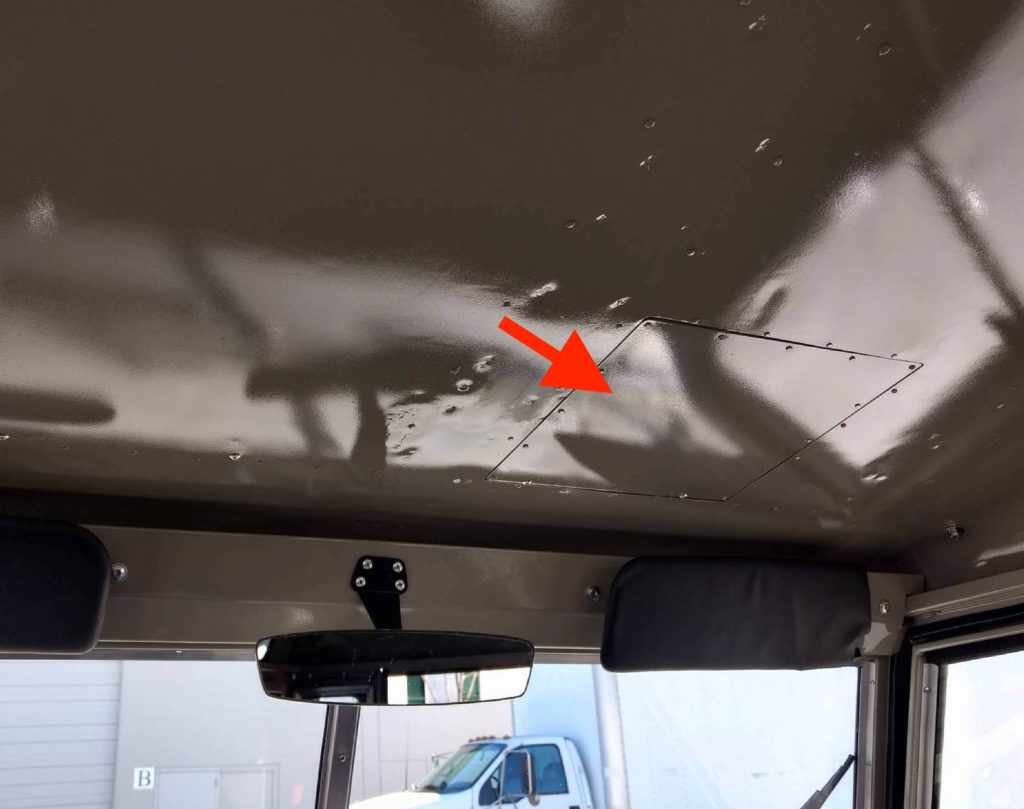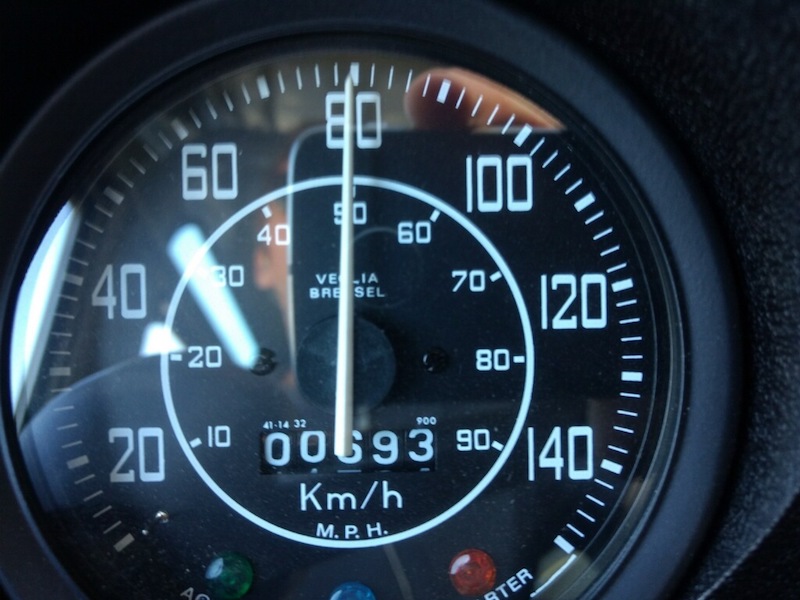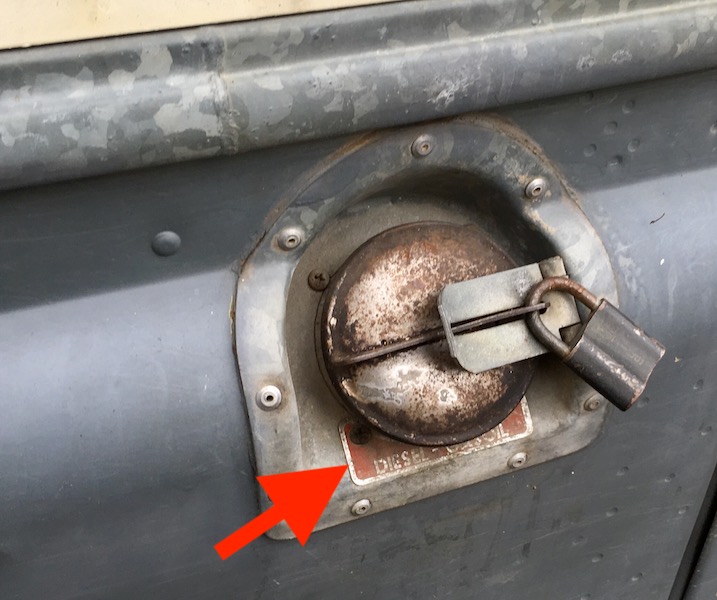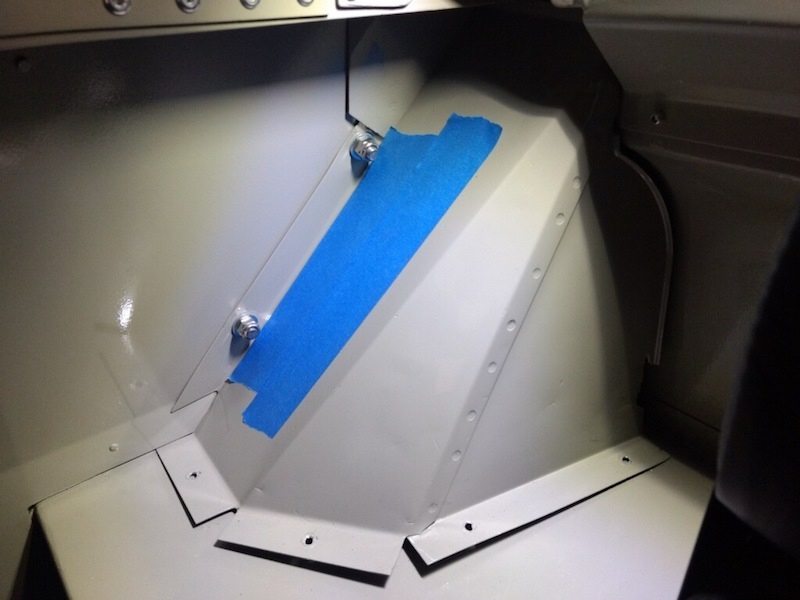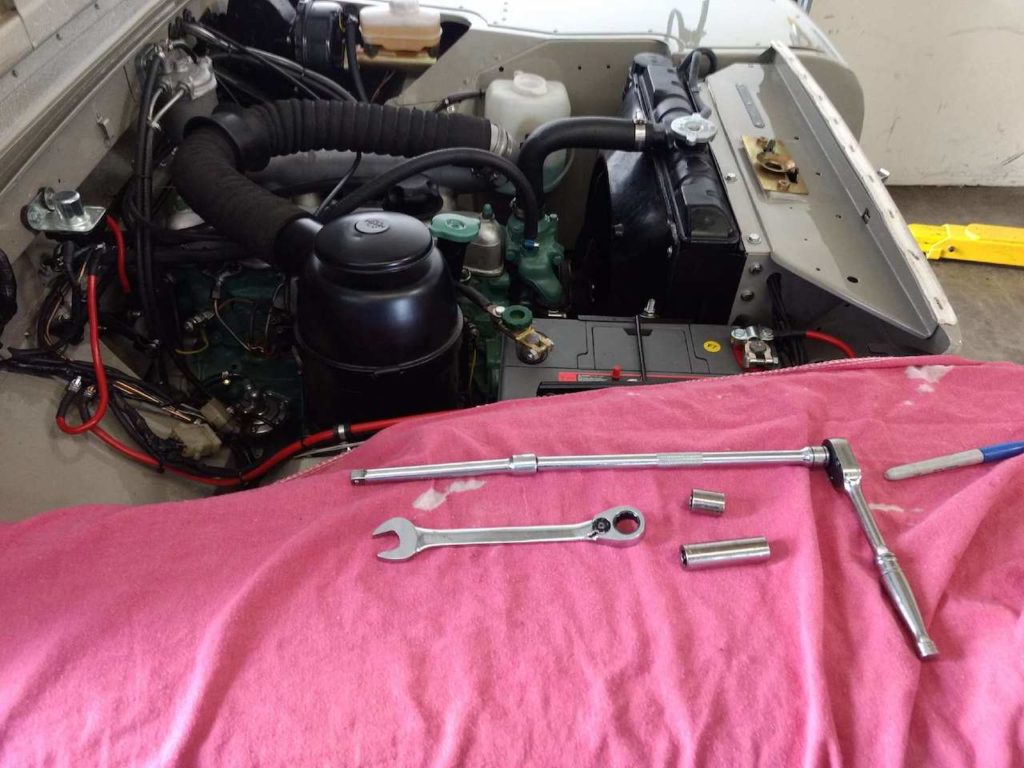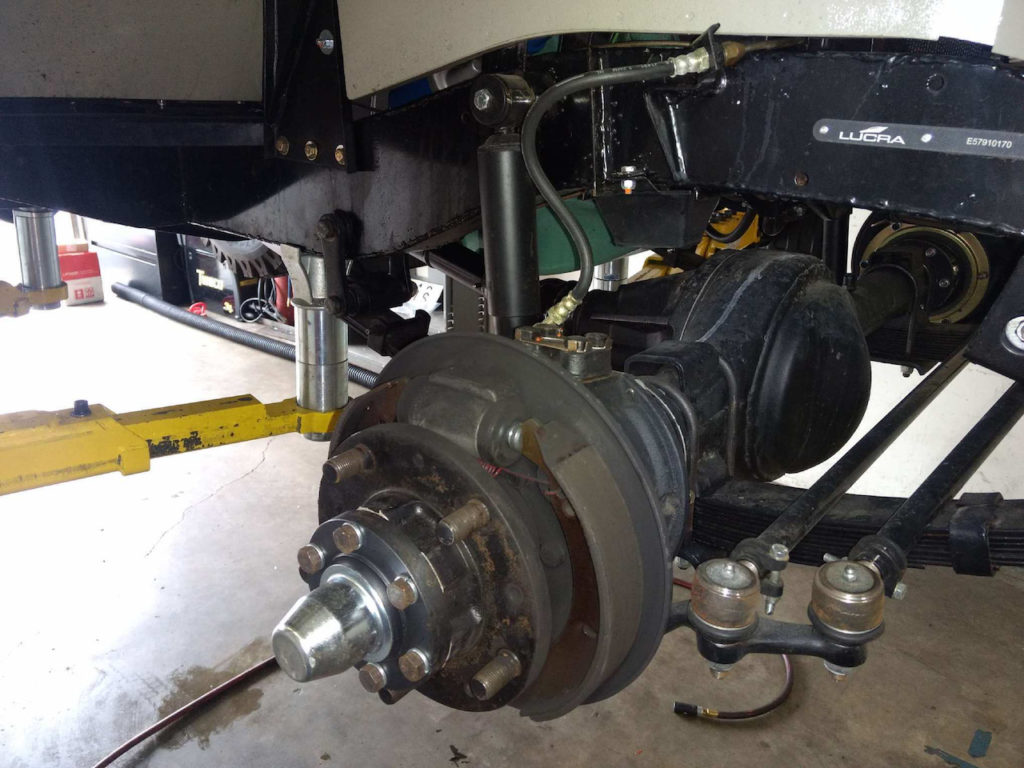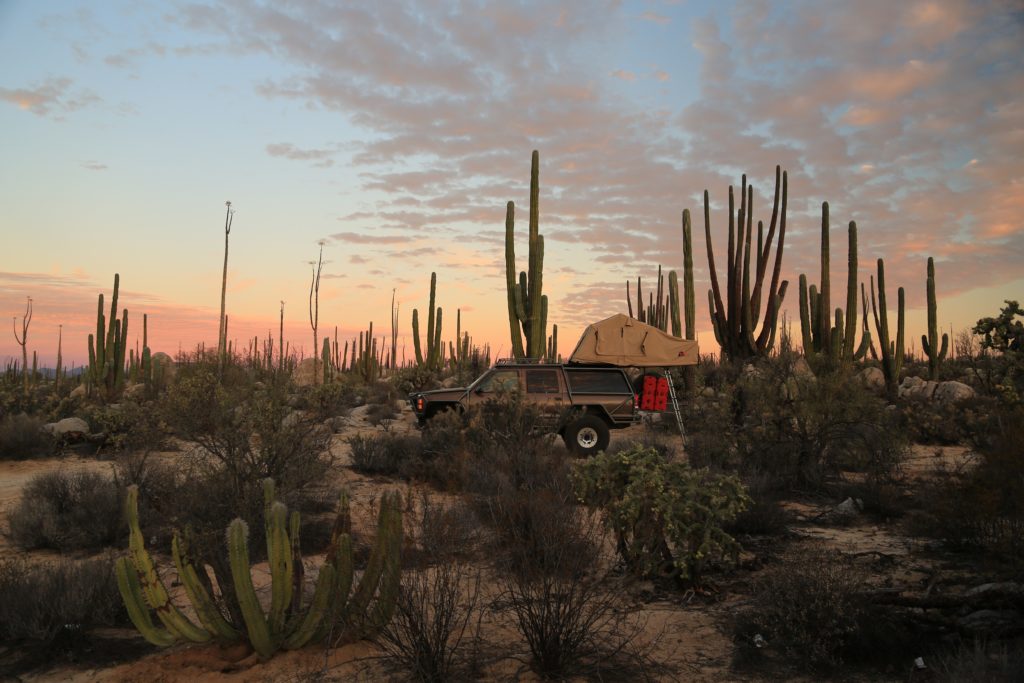Mr. Wolf has had the truck for less than a week but has already logged 200 km and spotted (and fixed?) a problem with the brakes. It was a little chilly in the Bay Area today so he had the heater on.
“How cold does it get in your area in the winter? The heater in the truck is working properly, and it is keeping me toasty in the oh-so-cold 40 degree California winter, but a blowtorch it is not. The defrost function is especially wimpy, but I think of my Westfalia: the defroster in the Westy doesn’t even have a blower motor, it just sort of wafts vaguely warm air in the general direction of the windshield, and you know what? It kind of works! Would it be acceptable if you were a punctual business man on an icy morning, and you needed your windshield defrosted RIGHT NOW? Absolutely not. But if you’re living life at Westfalia/Series Rover pace… Yeah, sure, it’ll do.”
“So… How hearty do you feel? Do you want to stick with the stock heater, don gloves and a hat, squeegee in hand for the drive to the coffee shop, or have you gone soft on me?”
Mr. Wolf said he could replace my heater with a better after-market heater for about $1,000 and I was considering it until he questioned my manhood. I’m sticking with heater we got.
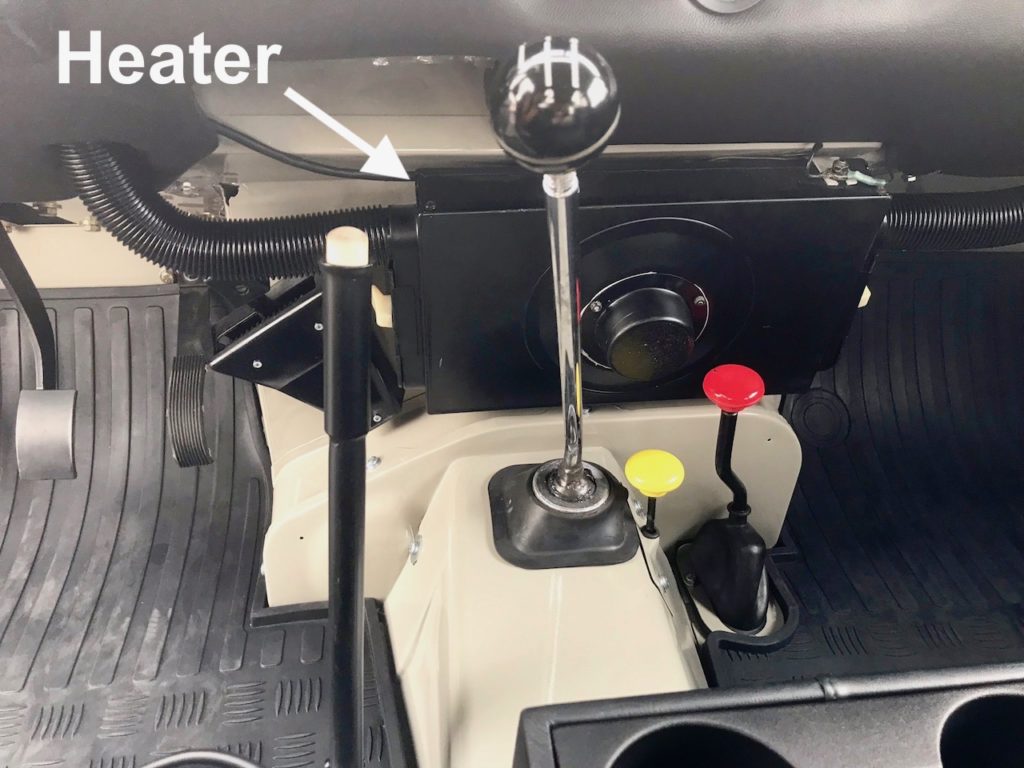
I’ve struggled to explain the appeal this old (1979) Land Rover has for me, given that I’ve only driven one once, for about 5 minutes. Mr. Wolf clearly understands the zen-like pull I feel but cannot articulate.
“I love fast cars, but slow ones are good for the soul sometimes. Driving the Rover is like driving my Volkswagen Westfalia: you will get there when you get there, you have time to look at the scenery and the sky, lots of waves, smiles, and thumbs up, and you never get stuck behind that slow asshole when you are in a hurry because you are that slow asshole! It is relaxing in a way.”
YES! I am that slow asshole. Exactly!
UPDATE: “Transmission very good, clutch needs adjustment. Engine running good but still hard to start when cold and very smoky. Both could just be it needing lots of break in miles, diesels tend to take a while to break in.”


